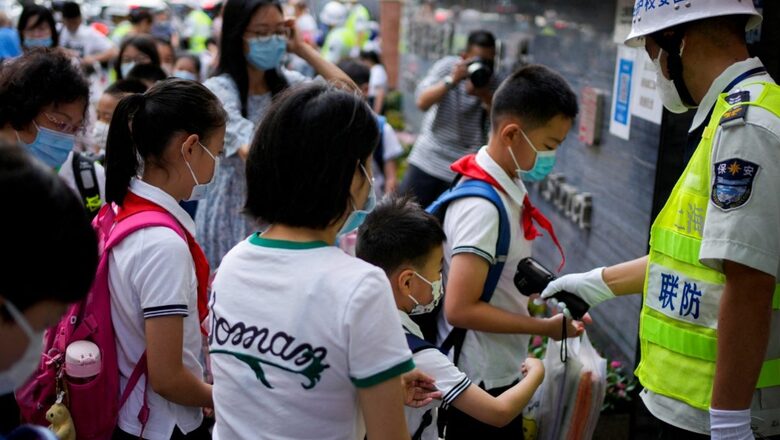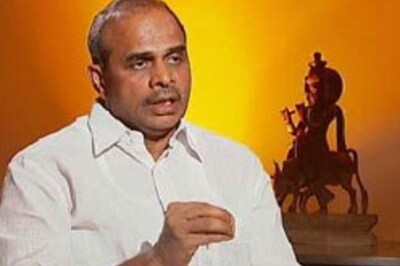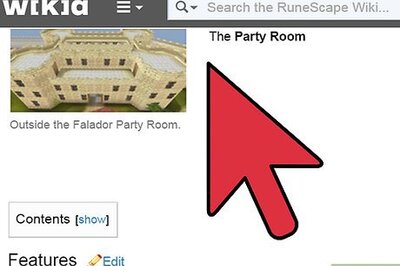
views
Censorship, surveillance, and authoritarianism have become synonyms with China in recent years. Beijing has reinforced its credentials by strengthening its surveillance and censorship grid, particularly in the context of the Covid-19 pandemic management. As the Chinese-origin epidemic derailed every sphere of life across countries by ravaging economies and social structures with millions of people dead, Beijing’s response was shrouded in mystery and speculation from the very outset. The way President Xi Jinping’s administration went about managing information about the outbreak, both domestically and internationally, along with its response, raised significant questions about the prevalence of the extent of censorship in the country. As the outbreak of Covid-19 marks five years, it is worth revisiting how Beijing not only maintained an information fog over the crisis but also amplified its disinformation tactics while invoking censorship measures.
From the very outset, as the reports of an unknown pneumonia type illness started emerging in December 2019, the Chinese government faced accusations of downplaying the issue, suppressing information and, importantly, silencing on-the-ground healthcare workers who attempted to raise the alarm about the deadly nature of the virus. The government maintained a complete monopoly over the emerging information from Wuhan through its tight control over media and instead went on a disinformation blitzkrieg to control the narrative.
One of the foremost whistleblowers who challenged the government narrative on the emerging epidemic situation was Dr Li Wenliang, a Wuhan-based ophthalmologist. Sharing his observations in their private medical practitioner’s group on Chinese social media, Weibo, a screenshot of which subsequently went viral, in late December 2019, Dr Li warned colleagues about a SARS-like pneumonia outbreak and asked them to take precautionary safety measures for their personal and family safety. The Wuhan local authorities subsequently penalised the doctor along with seven of his colleagues on January 1, 2020, charging them of spreading ‘rumours’ for disturbing public order. They were released on January 3, 2020, only after pleading guilty of transgressions like sharing inaccurate information which “broke the law” and that their conduct “severely disturbed public order” through a written submission.
The punitive action against these workers acted as a deterrent for sharing information by the medical community. It was only a court intervention which castigated Wuhan authorities for detaining these early epidemic whistle-blowers. The court observed that had the government officials heeded to the warnings from the detained healthcare workers and adopted precautionary measures than taking punitive measures by labelling them as rumourmonger, “it would’ve meant we could better control the coronavirus today.”
Dr Li contracted covid19 on January 8, 2020, while treating an infected patient and remained hospitalised till his death on February 7, 2020, “sparking a huge outpouring of grief and anger online in China.” The otherwise highly regulated social media sphere of China saw netizens criticize the government with media reporting that hashtags such as “The Wuhan government owes Li Wenliang an apology”, “I want freedom of speech” and “We want freedom of speech” saw millions of impressions, before being censored by the government. Dr Li’s death as such topped the Chinese social media with nearly 1.5 billion views, an event of monumental proportions on the otherwise highly monitored digital landscape of the country. This demonstrated a rare event, though momentarily, of popular reprehension of the government’s overarching control over the lives of its citizens.
It was this highly autocratic and centralised system that relied on monopolising the information sphere of the country which saw a delayed communication of information from China to the international community, especially the World Health Organization (WHO). It was reported that the first case of covid like symptoms was reported in mid-November 2019. A South China Morning Post investigation claimed that the government data revealed the first Covid-19 case was reported on November 17. “From that date onwards, one to five new cases were reported each day. By December 15, the total number of infections stood at 27 — the first double-digit daily rise was reported on December 17 — and by December 20, the total number of confirmed cases had reached 60,” the report stated.
However, it was only on December 30, 2019, that the Wuhan Municipal Health Commission notified the city hospitals through “urgent notices” about rising cases of unknown pneumonia illness. Interestingly, China refrained from sharing the information with the WHO, which took note of the media reports and issued its first reaction on January 4, 2020. It was on January 11, 2020, that the country finally shared the information and genome sequence of the virus with the world health body. It took nearly two months for China to confirm the “person-to-person transmission of the novel coronavirus and infections among medical workers” on January 20, 2020. This delayed information sharing amidst increased information fog by China meant that the international response to the emerging situation saw a critical delay with WHO declaring the epidemic as the Public Health Emergency of International Concern.
China’s attempts to maintain a pervasive disinformation fog regarding the Covid-19 pandemic were helped by its strict censorship regime to control the media landscape of the country. It is an open secret that the ruling Communist Party of China (CCP) tightly manages news outlets, social media platforms, and internet content through censorship mechanisms collectively known as the “Great Firewall”.
As such on the domestic front, the reports and commentaries critical of the government’s response, the virus’s origin, or the effectiveness of containment measures were swiftly censored. Access to information was restricted, and discussions on social media platforms were monitored and censored, as was evidenced by the events following the death of Dr Li in February 2020. Further, the Chinese government enforced “localised, temporary connectivity restrictions” to ensure that the information about Covid19 remained highly centralised and monitored.
Furthermore, an investigation by The New York Times in April 2023 revealed the extent of China’s censorship related to the information around the Covid19. It alleged that the Chinese scientists were forced by the government to withhold crucial data “withdrawn genetic sequences from public databases and altered crucial details in journal submissions” while claiming that the “Western journal editors enabled those efforts by agreeing to those edits or withdrawing papers for murky reasons.”
This control over the flow of information created an environment where only sanctioned narratives prevailed, limiting the public’s access to diverse viewpoints and independent reporting. The global watchdog, Freedom House, in its 2020 report described China’s “restrictions on internet freedom, particularly police interrogations of and forced retractions” of Dr Li and his colleagues as the enabler of the “COVID-19 to spread globally.” The Chinese government’s tightly controlled narrative and more so initial withholding of the information consequence in spread of the virus wide and far in the country and beyond as nearly five million people were allowed to exit Wuhan before the city was quarantined on January 22, 2020.
Interestingly, as recent as July 2023, the Chinese government suspended an online news portal, Health Insight, which was among a few ‘health only’ focused news portals in the country and had emerged as a prominent source of news during the Covid19 pandemic and. A South China Morning Post report stated that the news portal “looked into issues that were mostly ignored by mainstream media during the three years of China’s harsh zero-Covid rules. It pointed out the lack of medical evidence to support the use of Linhua Qingwen, a traditional Chinese medicine that Beijing claimed could treat Covid-19.”
As is evident from the above analysis, China’s centralised information system along with the employment of censorship, surveillance and disinformation tactics cost the world dearly in terms of responding to the global health emergency, shattering economies and societies alike, whose ramifications are ongoing. This essentially highlights the need for a transparent system at the international level where it should be incumbent upon the states to share the information as early as possible to avoid large scale loss of human life and its profound impact on economic means of production.
The writer is an author and columnist and has written several books. His X handle is @ArunAnandLive. Views expressed in the above piece are personal and solely that of the author. They do not necessarily reflect News18’s views.




















Comments
0 comment